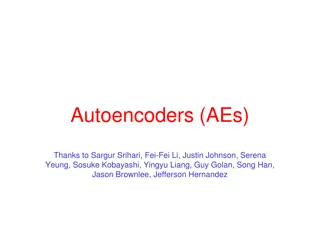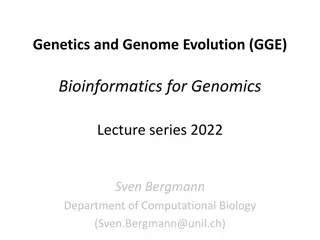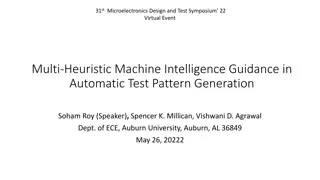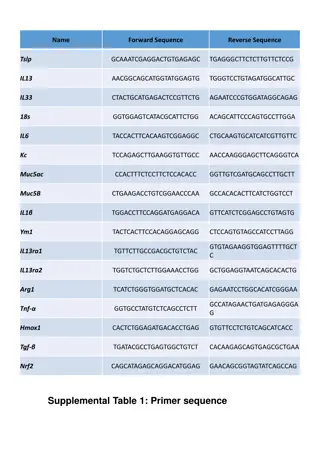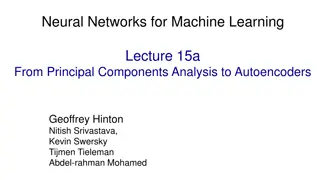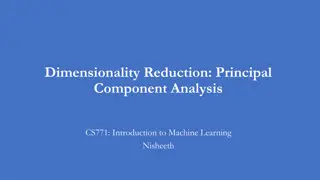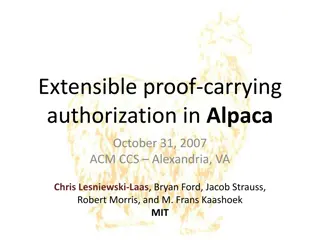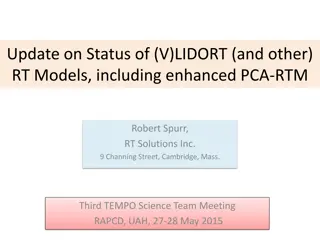
Understanding Principle Component Analysis: A Comprehensive Guide
Delve into the world of Principle Component Analysis (PCA) to uncover its significance in data dimensionality reduction, with a focus on its goal, mathematical interpretations, and practical applications. Explore the geometric meanings of PCA and the covariance matrix, shedding light on the quest for optimal signal-to-noise ratio and dimensional redundancy minimization.
Download Presentation

Please find below an Image/Link to download the presentation.
The content on the website is provided AS IS for your information and personal use only. It may not be sold, licensed, or shared on other websites without obtaining consent from the author. If you encounter any issues during the download, it is possible that the publisher has removed the file from their server.
You are allowed to download the files provided on this website for personal or commercial use, subject to the condition that they are used lawfully. All files are the property of their respective owners.
The content on the website is provided AS IS for your information and personal use only. It may not be sold, licensed, or shared on other websites without obtaining consent from the author.
E N D
Presentation Transcript
Introduction to Principle Component Analysis
Motivation When I consider what to say at group meeting Image processing on C/C++, PCA, part of my work, etc. Search PCA on Google scholar and find a interesting result And PCA is a frequently mentioned method But what behind it?
Outline Goal of PCA Geometrical meaning of PCA Some simple mathematical interpretation Example of application Focus on the part I used on my work
Goal Given a data table(matrix) X, we want to Reduce its dimension (Redundant dimension) Find a principle component e.g. the right scenario Noisy spring oscillation Three randomly put cameras We can record 6 data for a single moment Ax, Ay, Bx, By, Cx, Cy Source:[1]
Framework Ax, Ay, Bx, By, Cx, Cy [ ] A kind of change of basis Can be rewrite as ?? = ? (?) Here, X is an m*n data matrix m=variables, n=samples The m rows of P should be a set of new orthonormal basis
Framework The right example can modeled as ?1 ?1 ?2 ?2 ?? ?? ????????= A new basis is 1 1 1 1 ????????= 1 2 We can discard one basis (1, -1) And then the reduction of dimension is done
Covariance Matrix Let ? be a matrix that the mean of every variable is 0, e.g. (?1 (?1 ?2 ?2 ??) ??) ? ? ? ? ????????= Then the covariance of ?? and ?? variable is 1 ? ? ?=1 ?????? Generalize 1 ? ? ?? ? ?= ? ?is the covariance matrix of X Value at ?? row, ?? column (? ???) means the covariance of ?? and ?? variable What we want the transformed data table, i.e., Y, to be?
SNR & Redundancy Assume ? = ?1+ 1= ?1+ ?2+ 2= ?? is an approximated matrix and the rest is viewed as noise The lower the noise is, the better the approximation becomes (more principle ) High SNR Large variance for the signal Note that variance of ?? variable after some basis change is ???? which is on diagonal (2) When |????| increase (i != j) One variable is more predictable when given the other So we need to minimize it, i.e., set it to 0 (uncorrelated) (3) By (1) to (3), we can make a conclusion PCA is to find a change of basis such that ?? is a diagonal matrix
SNR & Redundancy Scatter plot of data points. Analogy to SNR Extract two different variables of each sample Source:[1]
PCA by Eigenvalue Decomposition ?????? ?? ??? ?? = ? ????=? ?X= ????? ?? ? ??? ??????? ??? ???????? ??=? ???????= ??X?? ??? ??? ?? ????????? ?? ??????? ??? ?? ? ? ?????????? ?????? ???? ?? ?? = ? ???? ?? ? ? ???? ?? ????????? ?????????? ??? ???????????? ?? ? ?????? ??????? ????????????? ?????????? For convenience, no bar notation here
PCA by SVD Change X to be an n*m zero-mean data matrix n still be number of samples, m still be number of variables ???: ? = ???? Recall what is V s property: ??? = ???? ??? is the covariance matrix here The same form as ?X= ????? So the columns of V should be PCs of X, and diag of D should be eigenvalues
EVD vs SVD When m large, generate covariance matrix takes enormous time However, in some algorithm of SVD[3], ??? is not calculated directly Experiment on Matlab is on next page As number of variables increases, computation time of EVD sharply increases Number of samples affect SVD more than EVD
EVD vs SVD 200 samples 500 samples EVD SVD EVD SVD 100 variables 1ms 3ms 100 variables 1ms 3ms 200 variables 2ms 4ms 200 variables 2ms 7ms 500 variables 12ms 7ms 500 variables 12ms 23ms 1k variables 45ms 15ms 1k variables 47ms 40ms 2k variables 280ms 40ms 2k variables 300ms 90ms 5k variables 6.6s 180ms 5k variables 6.7s 380ms 1k samples 2k samples EVD SVD EVD SVD 100 variables 1ms 8ms 100 variables 1ms 20ms 200 variables 2ms 15ms 200 variables 3ms 40ms 500 variables 12ms 42ms 500 variables 17ms 90ms 1k variables 55ms 130ms 1k variables 65ms 250ms 2k variables 310ms 250ms 2k variables 390ms 1s 5k variables 6.8s 780ms 5k variables 7s 2.3s
PCAs Properties Simply gives an analytic solution about the feature of data No additional parameter May not be the best method for like the following two cases Source:[1] However, if we want to find a match ellipse, PCA can still be applied on case A
Application Machine Learning Extract feature Reduce Dimension Speed up the training process Regression Ellipse matching Many topic using statistic Find the hidden pattern
Example Ellipse Matching (Center = Mean) ? ?1 ?1 ?2 ?2 ?? ?? ???? ???? ??????: ? = ?11 ?21 ?12 ?22,? = ?12 ?22 ?11 ?12 ?21 ?22 1 0 0 2 ??? = ??? 1,? = ?11 ?21 , 1 2 = ???? ????, = ? ??? ???? ?2? ? ? ?1? ?1 ?2 ????????? ? = ?? = = ???? ???? ????? : ?1=3? |2) 4? ?1 ??? ?2= 4?(|?1 ? ??? ???? ????? :?1=3? |2) 4? ?2 ??? ?2= 4?(|?2 Reference: Prof. Ding s handout
Example In eye tracking process: Two black part on the same altitude is a strong feature However, there may be rotation of face Scenario: Given a tiled face, straighten it
Example Use some method to find face & part of neck Sample the coordinates, and do PCA Only two variables, so EVD is better The principle axis is the long axis of the ellipse Rotate according to the axis
Reference [1] Jonathon Shlens, A Tutorial on Principal Component Analysis , arXiv: 1404.1100, April 2014 [2] Svante Wold, et al., Principal component analysis , Chemometrics and Intelligent Laboratory Systems, Volume 2, Issues 1 3, August 1987, Pages 37-52 [3] https://math.stackexchange.com/questions/2522793/can-we-do-svd- without-computing-eigenvector-decomposition


